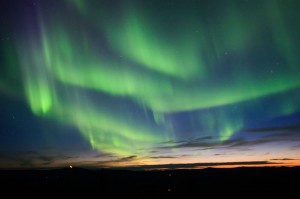
Aurora Borealis or Northern Lights is one of nature’s most spectacular night shows and can be seen as an immense glowing curtain that flutters above the night sky. Sometimes it appears as an arc suspended in the sky or as a diffuse glow which some believe are spirits because of their eerie, ghostly appearance.
Unfortunately, only those who live in the Polar Regions get to see these amazing nightly displays. But if you’re dying to see one, you can visit some of the best places for watching these northern lights like the Bear Lake, Fairbanks in Alaska, Moskosel, Lapland in Sweden, Calgary, and Bluff New Zealand.
Origin: People in ancient times believe these lights are the spirits of their ancestors, hence the so-called “dance of spirits” by the Cree people of North America. The name Aurora Borealis was coined by Pierre Gassendi (1621) from the Roman goddess of dawn, Aurora, and Boreas, the Greek name for the north wind.
With the advent of electricity it was believed that the concentration of electrical charges, coupled with the effects of snow and moisture in the Polar Regions lead to these mysterious phenomenon. Although partially true it was later found out that magnetic control in the poles and large electric current from the solar wind (Hiorter & Celsius, 1741) is responsible for the occurrence of the northern lights. Kristian Birkeland supports this view pointing out the east-west directions of the auroral arc.
Occurrences: The most remarkable documented auroral event in history was the so-called “great geomagnetic storm” of August 28, 1859 and September 2 of the same year. The second occurrence was noted for its unusual breadth and exceptional luminosity that was observed throughout the United States, Europe, Japan, and Australia. According to eyewitness account, it was the brightest they have ever seen, bright enough for them to read ordinary print with just the light from the aurora.
Effects: Another unusual effect of the geomagnetic storm is the disruption of certain communications that rely on electricity. What’s really odd is that during the massive auroral activity, some of the communication devices which had been badly working, functioned better without the batteries, using only the current induced by the aurora. This led to the conclusion that the aurora borealis is a mass of electric matter.
These electric matters were later identified as the ionized oxygen and nitrogen emissions that emit radiation in the form of green or brownish red and blue or red respectively, after reverting to their normal, unexcited states.
Recommended Articles:


Not a problem Tom. All the best in your article.